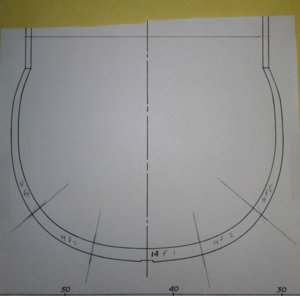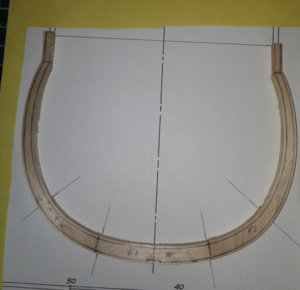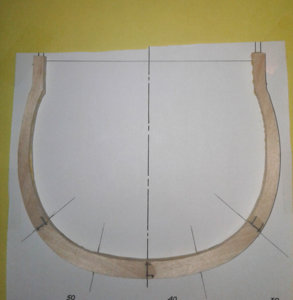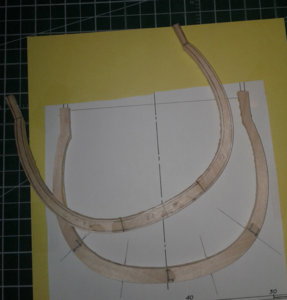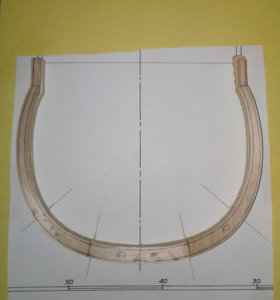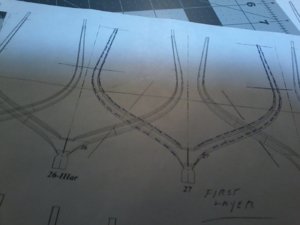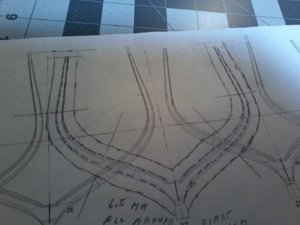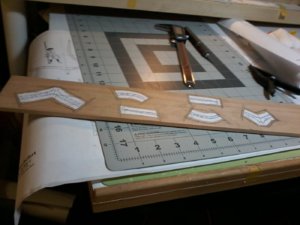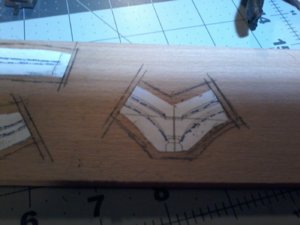To again set the context of this log straight...
This has been Don's goals and wishes since the beginning of his adventure into the construction of this small ship:
As stated at the start of his log and as written in his own words yesterday:
"Ok here goes some members do not understand what I am trying to accomplish even though I explained that at the beginning. Some people do not read the whole: me included.
My goal is simple on this build: it is not the complete build that I am aiming for. If I stopped right now I be would 85% what I am trying to do this build. It is not the end but the journey: THE LEARNING FOR ANOTHER SCRATCH BUILD, to understand the basics of items that I have been having problems with LIKE FRAME CONSTRUCTION, BEVELING, USING MY MILL, understanding and reading plans both ENGLISH TYPE AND FRENCH.
There is no 74 gun ship for me not even close, do not want anything to do with that just not my skill level and never will be.
I like the different framing of the different countries method of ship building: so different types of framing intrigues me like the FLUCCA, and other types of vessels at 82 years (APRIL) I WOULD NEVER LIVE LONG ENOUGH TO DO A WAR SHIP PERIOD so if I can learn to do proper frame construction, proper beveling, location and marking off of wales, different deck placement and some modest interior work like visual furniture but: THAT IS SCONDARY TO EVERY THING ELSE. If and I hope so I can complete this, it is icing on the cake and I am getting the confidence that I think I will complete this build. REMEMBER I HAVE ALREADY MADE THE KEEL STRUCTURE COMPLETE ALSO THE KEELSON, AND SOME STERN TIMBERS ALONG WITH THE HAWSE TIMBERS WITCH I WILL HAVE TO REDO NOT ENOUGH MEAT LEFT ON THEM, and my main concern is no jig I just can not physically make one anymore but I do have the large building slip, and I have ordered a smaller one so as to make it easier to work on. Don".
So to anyone willing to help him fulfill his goals and wishes, please remember and understand what he wrote.
Up to this point, Don's has been building frames the way he wanted. He is certainly well aware of the other way: the way many have suggested here and elsewhere.
He shared his wishes, his goals as well as his physical limitations at the very beginning of his project. If it was only the fact that he wanted to build his ship any way possible, he may have chosen another method: but he wanted to gain experience in building his ship the "so-called difficult" way: including doing it right side up - so get ready for it.
It has been his decision. He asked for help privately as well as publicly, I accepted and as it turns out have been one of the few to stick with him.
Yes, we all have different ways of doing things. I will never consider myself as an expert in anything, so , contrary to what people may think, the way I work is neither the only way nor the right way. I am just another guy ... offering some guidance and following the modeler's wish.
The most important point is that methods need to be adapted to his limitations: methods do not have to be discarded because of his limitations: however silly some may think it is.
Don is willing to go through the "pain", the "difficulties" associated with building a ship. He is to be commanded for that.
It happens to be the technique he wants to use so it is the technique we "owe" to help him with, while remembering the goals HE has set.
Sorry for the long post. I am just hoping that members / readers / helpers will finally understand and offer guidance according to his wishes to COMPLEMENT the work he has done so far. As one will have noticed, there is a lot of improvisation going on in this log. A lot of questions, a lot of text and explanations resulting in a lot of confusion (the number of posts from last night illustrate that perfectly).
So please offer help if you can while keeping all this in mind.
Thank you.
G

